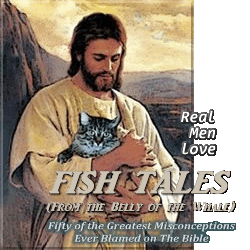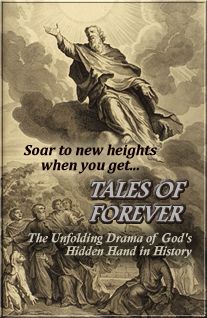A Matter of Style (Cont’d)
A Clarity of Language
Throughout the history of storytelling, authors have made a concerted effort to flesh out their narratives by means of presenting three crucial elements—the time when a story occurred, the place where it occurred, and the characters who existed when and where that story occurred. Primarily, the way in which the first two aspects of storytelling are portrayed, that is, the “time” and “place” of any given story, have been done in a fairly straightforward manner. Whether the author’s presentation of such matters can be characterized as either profoundly poetic or merely functional in style, the conveyance of time and place is generally more an indication of the author’s personal writing style rather than anything intrinsic to the story itself.
On the other hand, the one aspect of a story that exists apart from the author’s style is the way in which the “characters” of a story are presented, which is done not so much by way of what they do but how they speak. In other words, regardless of the background and origins of an author, the characters of a given narrative—either fictional or nonfictional—should always speak in a way that is true to that character’s unique background and origins. Whereas an author may depict the time and place of a story in a multitude of ways without altering it, the way that characters speak will inevitably alter the reception of that story. More than any other aspect of the story, how characters speak must ring true to the time and place that they inhabit, or else the audience might interpret everything they do as false or contrived. The depiction of the dialog of a story’s characters, then, is the paramount hurdle with which an author must contend, and never more so than with a narrative like The Book of Tales, which attempts to portray characters that clearly have a specific historical setting.
Story Continues Below
Says Richard Price—the founder and CEO of Academia.edu—on his podcast In Depth With Academia:
The Book of Tales: Stories That Confirm the 5,500-year Prophecy Given to Adam About the Coming of Christ is:
To hear Price’s book review of The Book of Tales, CLICK HERE.
To hear Kent, Zen Garcia and S. Douglas Woodward, as they discuss the 5,500-year chronology from Adam to Christ, from the perspective of The Septuagint Bible, to confirm the contents of Tales of Forever, CLICK BELOW.
Story Continues From Above
A prime example of dialog that uniquely conveys the setting of a story can be found in the literary works of Mark Twain. Through his clever use of dialect, Twain not only conveys a character’s personality but, with little or no back story at all, he also conveys their education level and position in society. On the positive side, Twain’s use of dialect provides insight into his characters through a dialog that, by way of texture and sound, reveals a great deal about the setting of the story—one which conveys a truth far beyond the author’s mere description of the time and place in which the characters exist. On the negative side, however, trying to read dialog that is steeped in a peculiar dialect is sometimes very difficult to decipher. Often narratives that resort to foreign dialects to convey the background of certain characters work on one level, but because the dialog is so stultified, the actual message of the work is literally lost in translation. As a result, books or movies with dialect-laden dialog might be applauded by one segment of the audience, such as critics or other artists, while the average patron winds up on the losing end because of the difficulties that arise from trying to decipher the dialog. Unable to follow the plot, the reader or viewer disengages from the narrative before they even have an opportunity to get involved with the story.
To avoid such a potential death knell to box-office success, many filmmakers have pursued an alternate route in attempting to convey the settings of their stories. Rather than employ characters that resort to hard-to-understand dialects, they use those who speak in the language of the people they portray while providing subtitles for the sake of the audience. Such is the case in films like The Longest Day, Dances with Wolves, and The Passion of the Christ. In The Longest Day, unlike most war films of that time, all the German and French characters speak in their own language, accompanied by English subtitles. Dances with Wolves has much of its dialog spoken in Lakota with English subtitles. And not to be outdone, The Passion of the Christ does not contain a single word in English. The entire film is comprised of characters who speak Aramaic, Latin, and Hebrew. Yet ironically, in order to convey its ancient message to a modern audience, the filmmakers chose to subtitle the film in what can only be described as “vernacular English.”1
Therefore, when it came time to establish the style of dialog in this modern adaption of ancient tales, all of these potential pitfalls and possibilities loomed large in my mind. As a result, I decided to make every effort to avoid any of the aforementioned clichés. What kind of historian would I be, I asked myself, if I sought to make Enoch and his counterparts speak like characters who had just stepped out of one of Shakespeare’s plays simply because audiences expected biblical characters to speak that way? Above all, I sought to achieve a clarity of language with this newly forged rendition. I was not content to simply convey the meaning of these stories in the same way that a literary scholar might do. More than anything else, I wanted these timeless tales to be expressed in a language that could be understood by every strata of society, from the scholarly critic to the ordinary individual.
As it turns out, I am not alone in such an effort. As a matter of fact, the same thing has been happening for many years in respect to updating the Elizabethan English of the King James Version of The Bible. Not until 1885, with the creation of the Revised Version, had any significant changes been made to it since its inception in 1611. Then, in the wake of the growing popularity of modern-day revisions, the twentieth century saw more and more similar endeavors, spearheaded by leading theological minds like Edgar J. Goodspeed, who, in 1939, published The Bible: An American Translation. Although these kinds of translations have always been met with a mixture of praise and criticism, Goodspeed insisted that such efforts constituted a necessary evolution in the language of The Bible. Said James I. Cook, in his biography of the man:
Nothing horrified Goodspeed more than the popular notion that the modern Bible translator merely tinkers with the King James Version, replacing its archaic words with their modern equivalents. For him, the case for a new translation rested … upon the papyrus discoveries of the late nineteenth and early twentieth centuries. He was convinced that these rendered intolerable, not simply the individual words but the entire linguistic style of the King James Version and its revisions. The papyri solved the problem of what kind of Greek was in The New Testament. It was not the classical or literary Greek of its own day… The papyri showed that The New Testament was written in the vernacular Greek of its time, the language of everyday life.2
This is why Goodspeed was so determined that despite all the well-intentioned protestations: “The New Testament must be retranslated if it is to reach the modern reader with anything like the force it had in antiquity.”3 And for Goodspeed that meant: “The only appropriate vehicle for such retranslation is the common vernacular English of everyday life.”4 Therefore, just as Goodspeed sought to make the canonical Bible more accessible by updating its language, I have sought to do a similar thing with the apocryphal books. Rather than assigning so many lines of ill-conceived dialog to the people in these stories, I chose to allow them to speak in a language entirely devoid of inappropriate dialects, which, in my view, contradicts an accurate depiction of reality. Let me explain what I mean by that.







